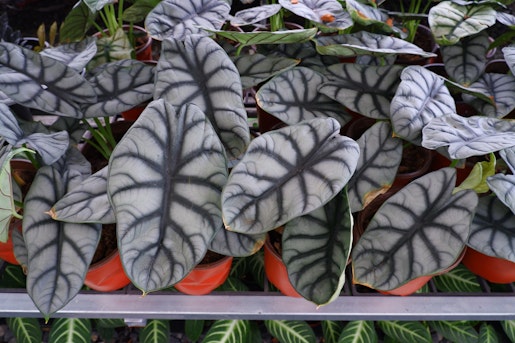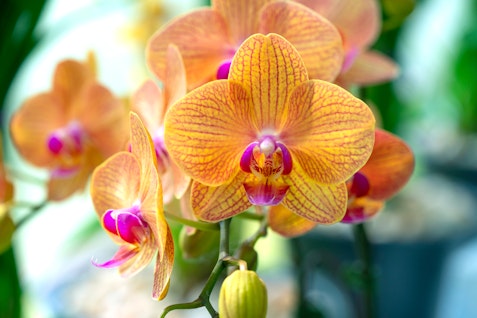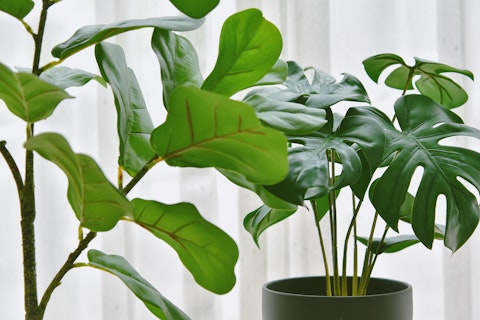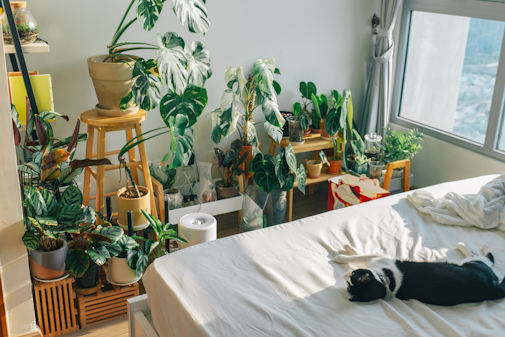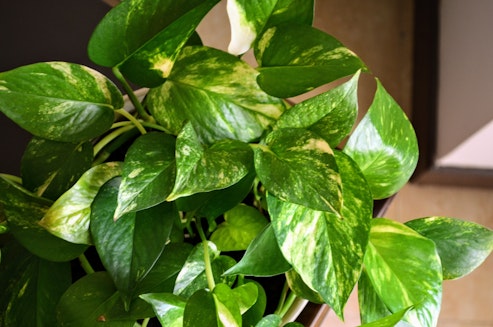
- Home
- For the love of Epiphytes
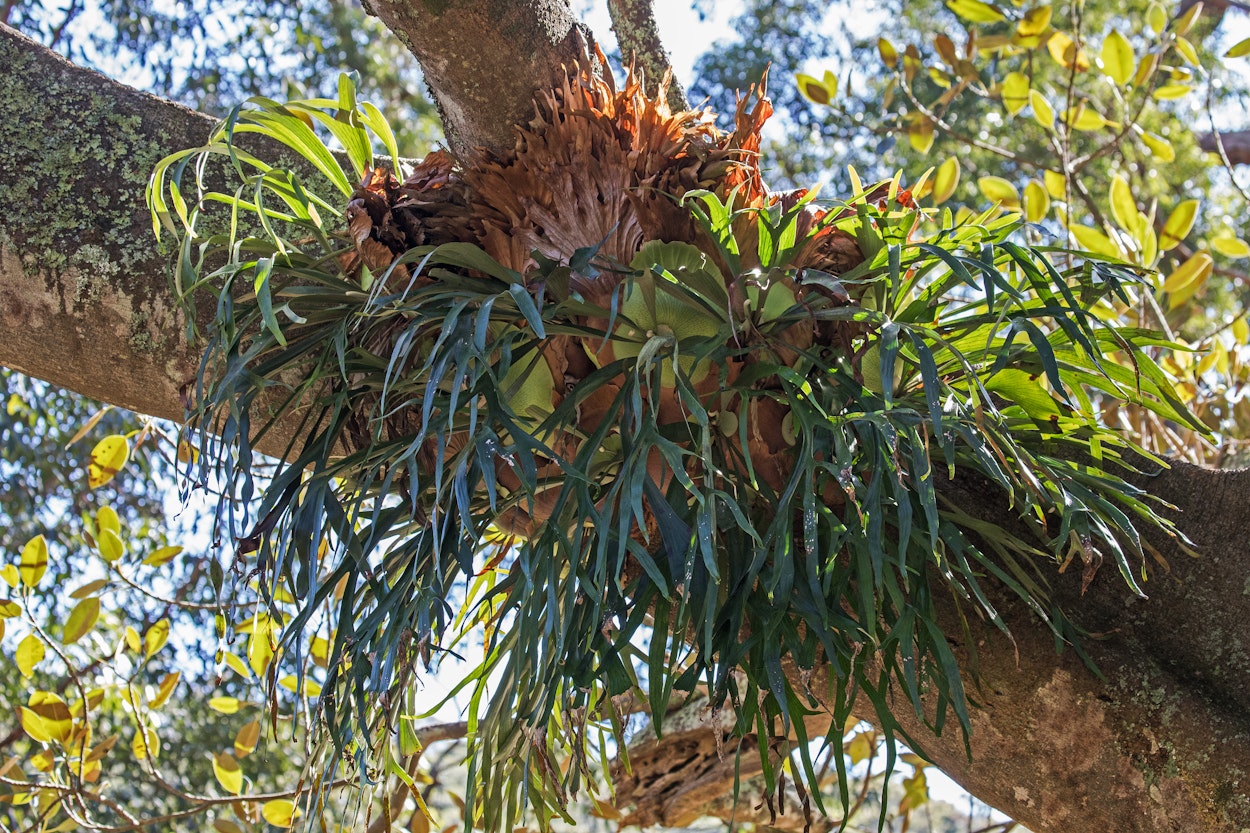
For the love of Epiphytes
It’s likely that you will have a number of epiphytic plants in your collection and it’s probable that they’re planted into a pot with potting mix or the substrate of your choice but consider how well they would grow if they were able to grow in a way that mimics their natural environment.
Epiphyte is defined as “a plant that grows on another plant, especially one that is not parasitic, such as the numerous ferns, bromeliads, air plants, and orchids growing on tree trunks in tropical rainforests” by Oxford Languages.
The etymology of this word is from the Greek epi meaning "upon, at, close upon” and phyton meaning "plant.” Epiphytes absorb moisture from rainfall and the air around them, they get their nutrients from plant debris, animal excrement and leached water as the rain washes it over their roots or trichomes.

Epiphytic plants can be mounted on a variety of materials, we prefer to mount them on cork bark and cedar wood. Cork bark has a rough texture and is porous which simulates natural conditions for epiphytes as the roots get plenty of ventilation. It is also water resistant, lightweight and durable, anti-fungal and antimicrobial; it’s got it all! Similarly, cedar wood is durable and although not completely waterproof it is incredibly rot resistant.
We love how our favourite epiphytes look when mounted on the perfectly gnarled cork bark; they’re living works of art. Creating these has allowed us to explore our creativity and to share our love of these pieces with you. Each mount is custom made at our greenhouse to suit the shape and size of the plant, no two pieces area alike. We use fishing wire with premium sphagnum moss to attach the plant to the plank or bark.
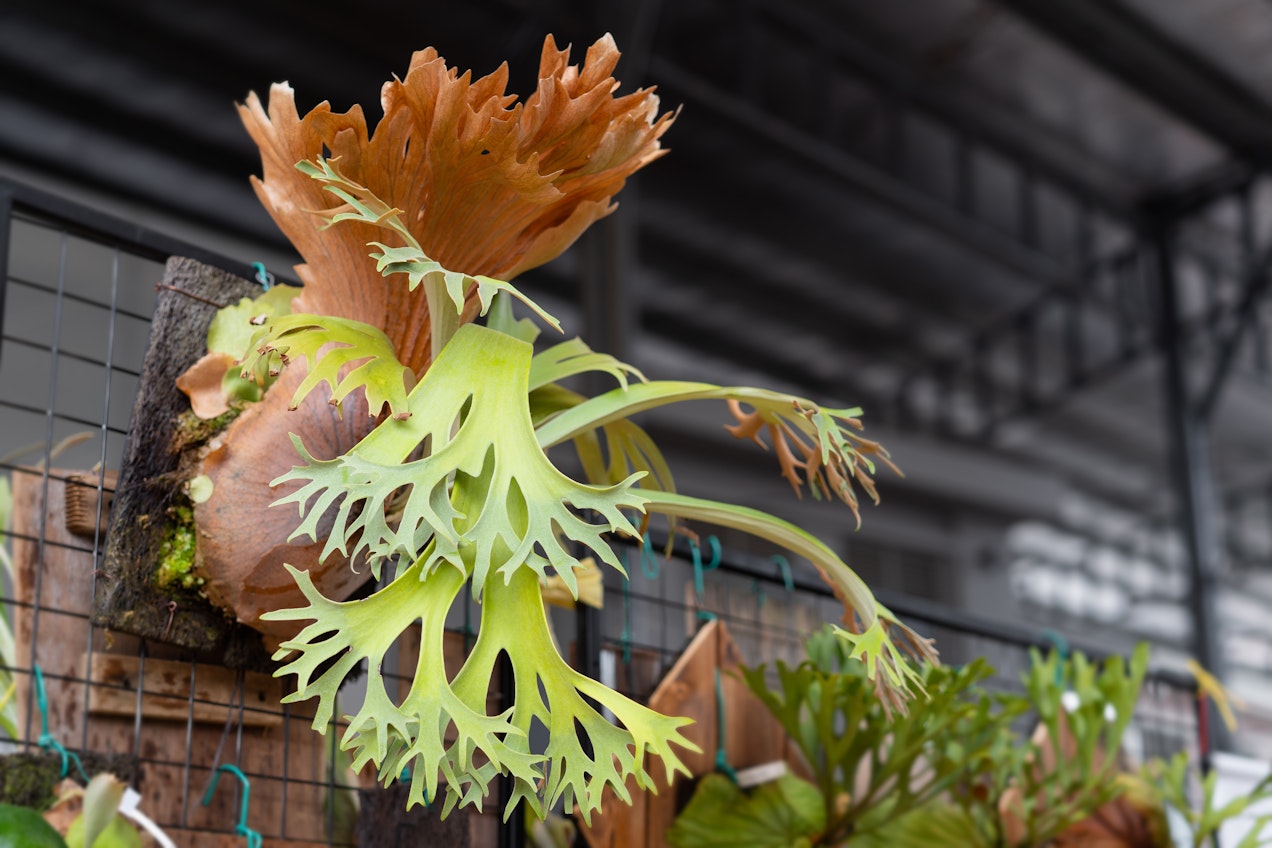
Some epiphytes you might recognise
- Hoya
- Tillandsia
- Platycerium
- Dischidia
- Asplenium
- Orchids
- Bromeliads
- Some Anthurium
- Some Philodendron
- Rhipsalis
- Disocactus
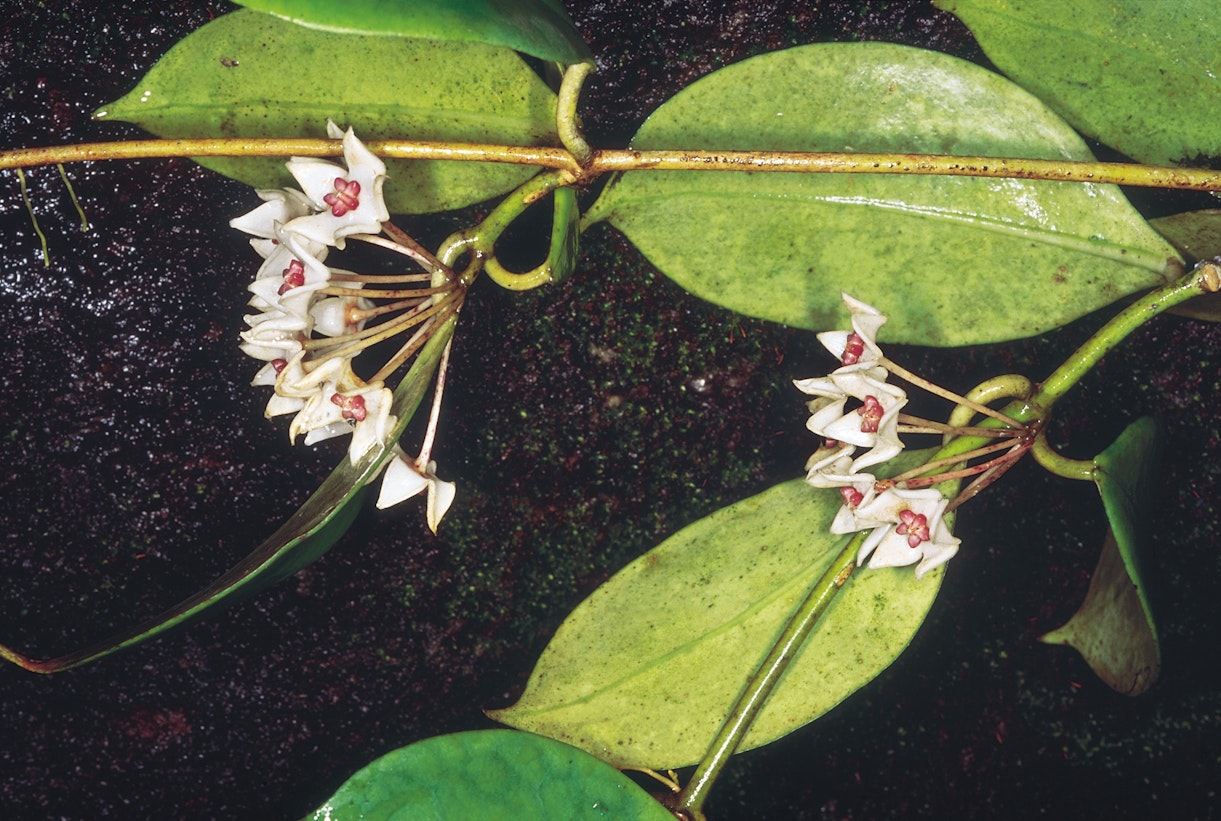
A lot of epiphytes have evolved to have succulent characteristics in order to store water and cope with sun exposure; for example some orchids have a pseudobulb (a stem that resembles a bulb) that holds on to moisture. Hoya often have thick waxy leaves and use CAM photosynthesis*1 to prevent water loss.
The adaptations of epiphytes are fascinating; they use aerial roots as a way to anchor themselves to the host plant. Roots contain suberin which is a lipophilic macromolecule which acts as a physical barrier to prevent water loss and therefore increase water storage; this has proved beneficial in orchid species. Orchids such as Catasetums have adapted to lose their leaves in periods of drought and then enter a dormancy; carbohydrates and moisture are reserved in the pseudobulb or tuber until favourable conditions return, this is when new growth emerges. Cattleya orchids are considered ‘drought endurers’, their thick velamentous*2 roots allow nutrients and water to be absorbed quickly as they become engorged when in contact with water. The velamen radican also becomes almost completely impermeable during drought thus preventing water from being lost from the roots. It is also thought that the velamen has specialist cells for gas exchange too.
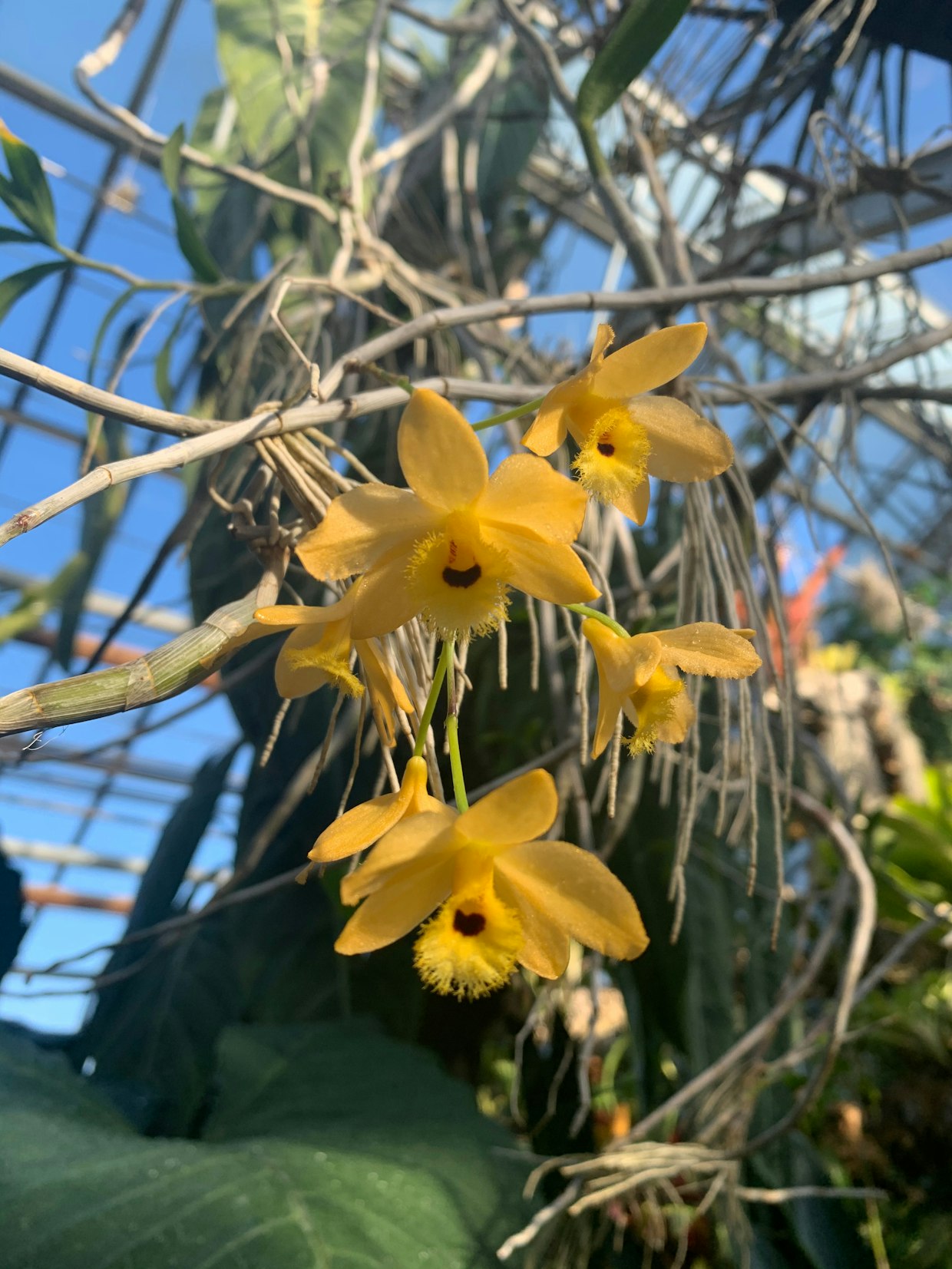
Some of our favourite epiphytes
Platycerium
Platycerium are part of the Polypodiaceae family and their native range is Tropical & Subtropical Old World, Peru to Bolivia.
Platycerium bifurcatum is widely cultivated and one of the easiest to grow; under optimum conditions these plants can reach up to 3ft across. These striking plants are commonly called ‘Staghorn ferns’ because their foliar fronds resemble antlers.
They grow from short rhizomes that produce two types of fronds; the sterile (non-reproductive) basal fronds which overlap, growing flattened against a tree to protect the rhizomes and are sometimes called the shield frond. The basal fronds are initially green and succulent, as they age they become papery and a tan colour. The second type of frond is known as the fertile or foliar frond, these tend to be a rich green colour, strap shaped with forked ends. They produce spores on the underside of the fertile fronds; these appear as dark brown masses called ‘sori’.
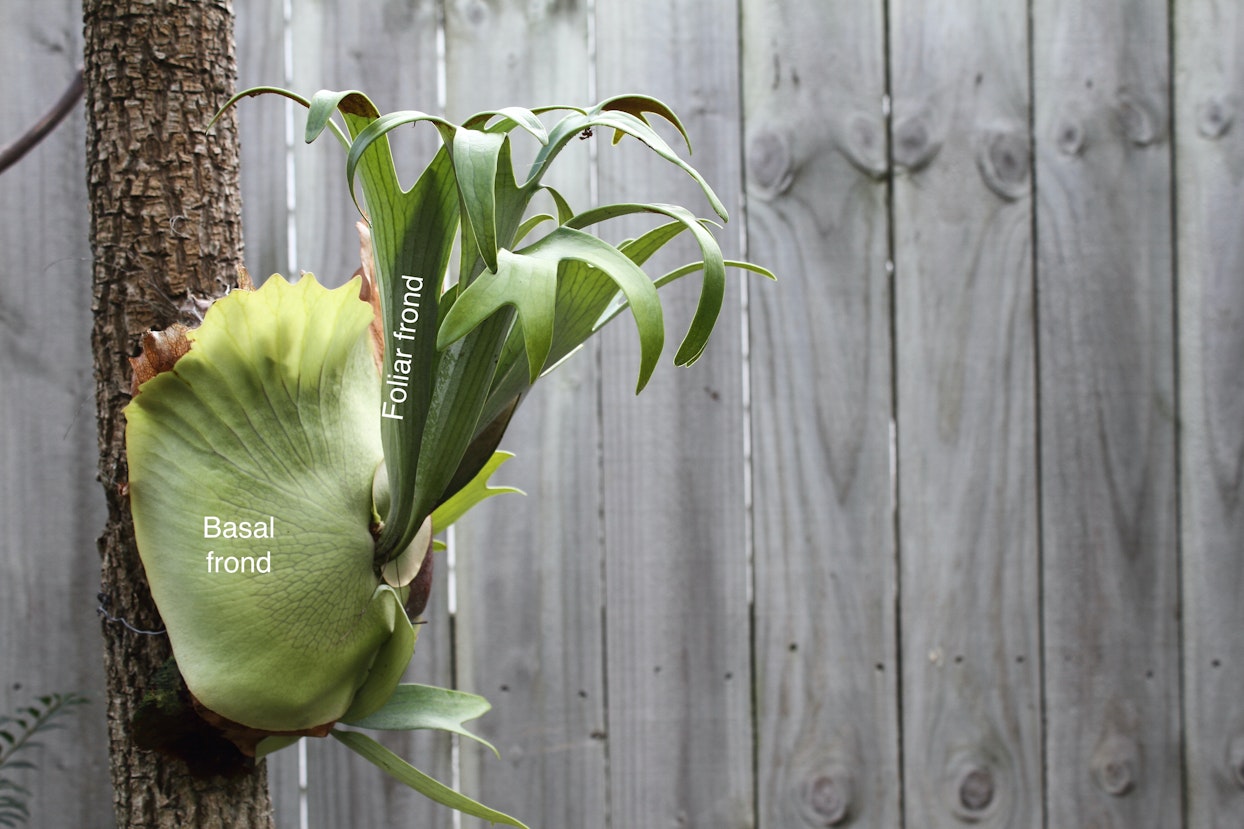
The epiphytic growth habit makes them an ideal plant to mount; it mimics how they would grow in the crooks of host trees in their natural habitat. We use New Zealand sphagnum moss (Spagnum cristatum) that is harvested from a sustainable and managed wetlands area. Its long and strong strands are highly rot resistant and can hold up to 20 times its weight in water, it is also virtually sterile and has low concentrations of soluble salts. Plants are either mounted on treated wood, cork bark or cedar wood.
Hoya
Hoya are part of the Apocynaceae family and they’re native to Tropical & Subtropical Asia to W. Pacific.
The Hoya genus is incredibly diverse and it is estimated that there are between 350-450 species. Hoya produce vines that twine anti-clockwise and have randomly spaced adventitious roots which they use to adhere themselves to their host trees. Most grow between 0-800m altitude on primary and secondary branches of trees. Hoya have also been observed to grow on calcareous outcrops.
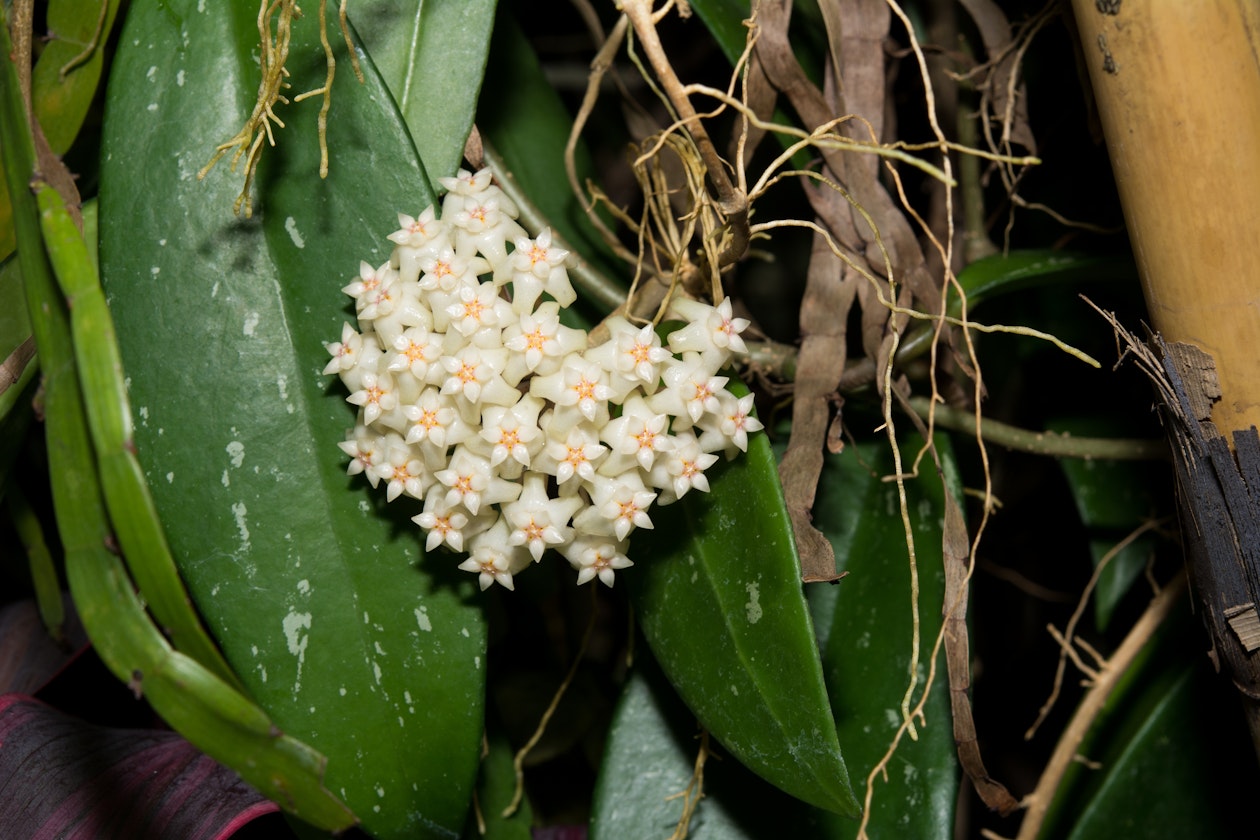
Asplenium
Asplenium is part of the Aspleniaceae family. Asplenium nidus is native to Malesia to N. & NE. Queensland, it is often called 'Birds nest fern'. Fronds are strap shaped and shiny, bright green with dark brown midribs. The fronds grow in an inverted cone shape; there is a nest-like centre (hence the name) that collects falling debris. Sporangia forms in clusters on the undersides of fronds.
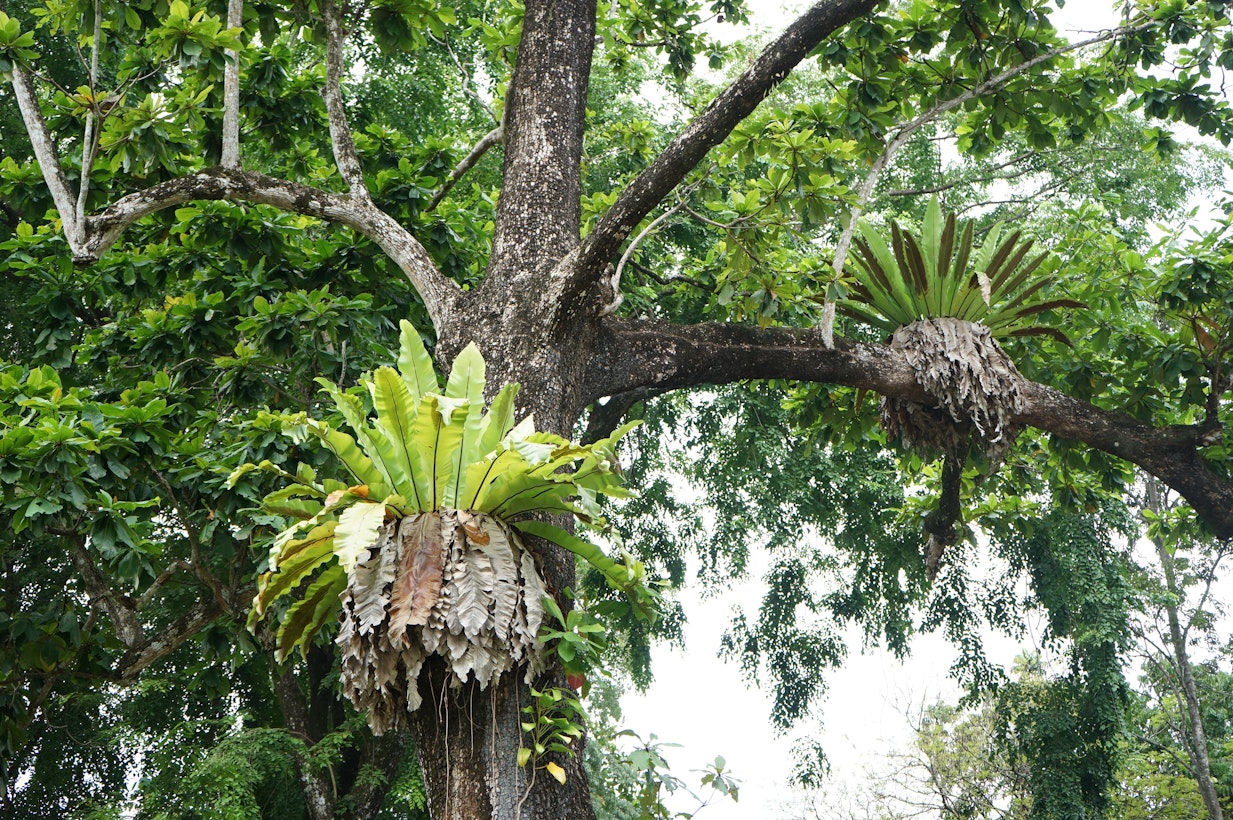
How To Water, Grow And Care For your Mounted plant
How do I water my mounted plant?
When the moss feels dry to the touch (not crispy) you can mist it. You can also soak the plant - board and all - in tepid water for 5 or 10 minutes until it’s saturated, allowing it to drip dry before rehanging. Alternatively, you could pour tepid water onto the moss while keeping the board at angle in order to saturate the root ball. Typically you would be watering a mounted Hoya much less than Platycerium and Asplenium due to their thicker waxy leaves.
What happens when my Platycerium fills the board?
When you see the shield frond creeping round the edges of the wood, simply attach a larger piece of wood onto the back of the original board.
Where should I position my plant?
Platycerium bifurcatum, Hoya incrassata ‘Variegata’ and Asplenium nidus require bright indirect light, meaning the plant sees the sun for 0-4 hours per day - this could be through trees or a translucent curtain but it’s important for the plant to see the sky in order to thrive. They can handle a few hours of filtered sun. If you have this kind of light in your bathroom and temperatures between 15 and 28˚C, the extra humidity would greatly benefit the plant.
Do I need to fertilise my mounted plant?
I would recommend feeding every few waterings when you observe active growth, this is predominantly spring and summer. Simply add some liquid gold leaf or other suitable fertiliser to a spray bottle and mist the Sphagnum moss or add the recommended amount to the water you submerge your mount in.
*1 CAM Photosynthesis - Crassulacean acid metabolism; “typically associated with plants living in water-stressed conditions. By closing their stomata during the day and fixing carbon dioxide (CO2) exclusively at night, CAM photosynthesis allows plants to use water more efficiently while fixing carbon for growth.” (Y. Y. Ignacius Tay, Kristoforus Bryant Odang, Y. Maurice Cheung)
*2 A spongy layer of dead cells that covers the living filament of the aerial roots in order to absorb atmospheric moisture.
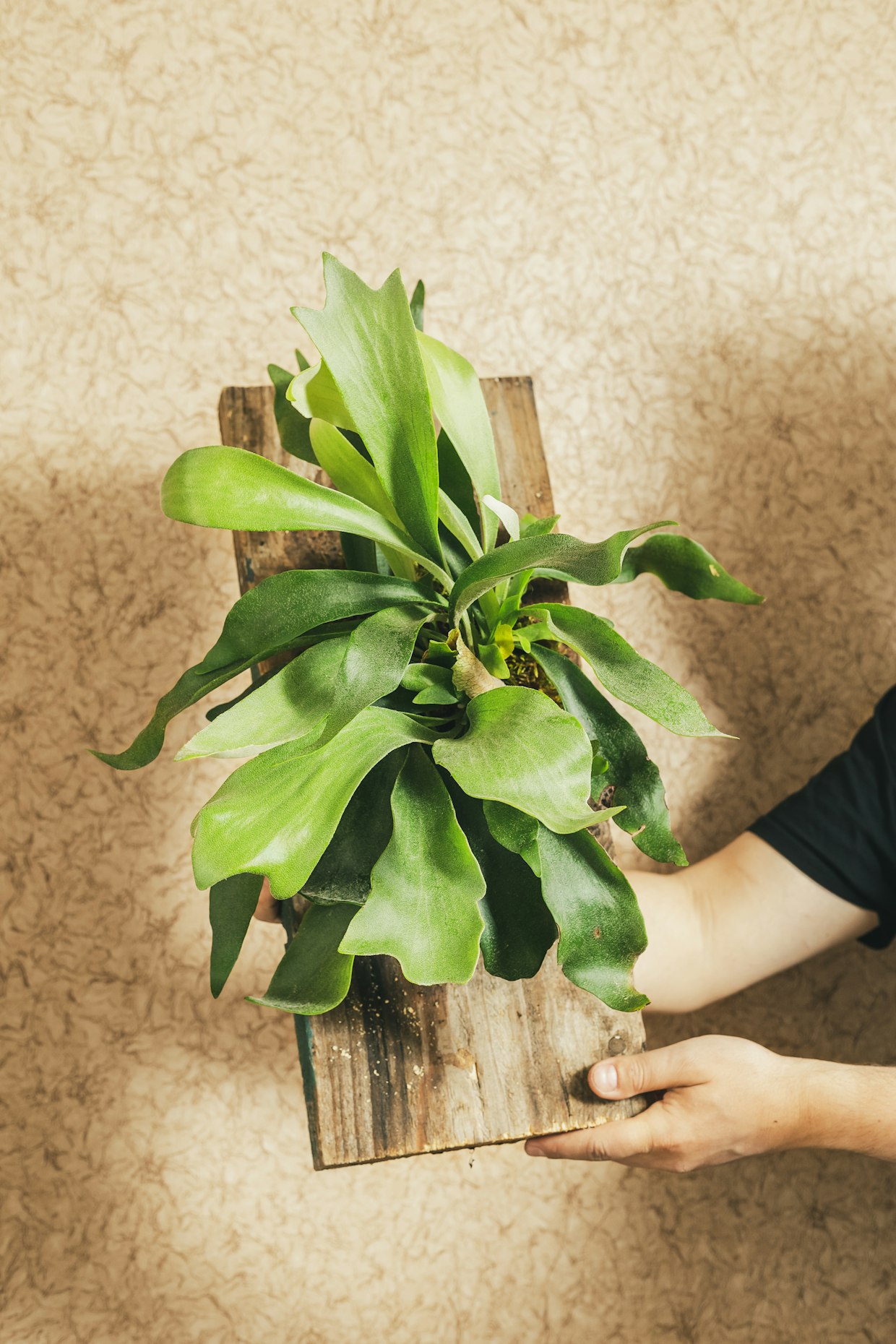
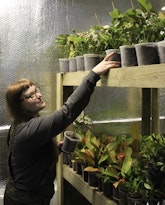
Lisa Price
Lisa Price is the visionary founder behind Root Houseplants, a thriving venture that has blossomed into one of Liverpool's most beloved botanical havens. With an intuitive passion for greenery and an entrepreneurial spirit, Lisa embarked on her journey to bring the beauty of nature into urban spaces. Driven by her personal quest for unique and affordable houseplants, Lisa recognised a gap in the market and decided to take matters into her own hands. In 2017, she took the leap, establishing Root Houseplants to provide enthusiasts with a diverse array of botanical treasures. Through dedication and determination, Lisa's business flourished from its humble beginnings on eBay to a thriving online platform and eventually, a brick-and-mortar store in Liverpool previously in West Kirby. Root Houseplants quickly gained recognition for its exceptional offerings, from prestigious publications such as The Times, Living Etc, and Independent Liverpool. Lisa's expertise extends beyond being a business owner; she is an advocate for plant education and community engagement. Root Houseplants isn't just a shop—it's a hub where enthusiasts gather to exchange knowledge, share stories, and foster a deeper connection with nature. Lisa's love for plants goes beyond the business realm; it's a personal passion that permeates every aspect of her life. When she's not tending to her extensive collection of Hoya, Aroids and Arids, Lisa can be found at home with her beloved sausage dog, Bubs, or indulging in her guilty pleasure of binge-watching Grey’s Anatomy and cooking shows in her pyjamas. Root Houseplants continue to thrive, spreading joy and greenery throughout Liverpool and beyond. Her unwavering commitment to quality, sustainability, and customer satisfaction ensures that Root remains a cherished destination for plant enthusiasts seeking to cultivate their own urban oasis.
More by Lisa PriceRelated Articles
View all articles
